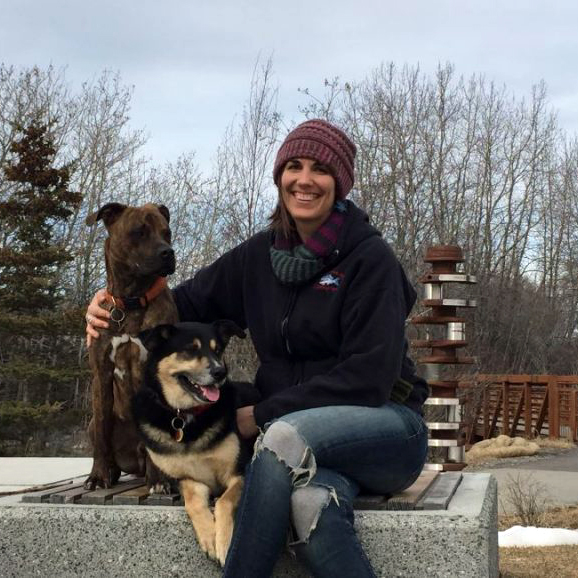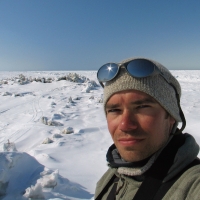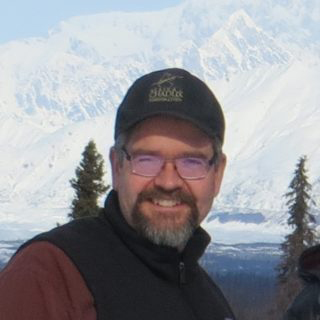Project Abstract
In the Arctic where, environmental conditions are rapidly changing, the need to monitor these changes is critical to inform natural resource management and land management, protect built infrastructure, reduce risk to human lives, and enhance community resilience for Arctic communities. Currently in Alaska and northern Canada there exist numerous environmental monitoring programs that are led and implemented by a diverse array of indigenous communities, government agencies, and research institutions, often with little coordination or connection to one another. Led by a diverse team representing dozens of entities, this project fosters the development of coordinated monitoring networks by linking existing programs across Alaska and northern Canada. This project aims to achieve the following objectives: 1) to better understand important phenomena and dynamics (e.g. long-distance wildlife migration patterns, shifting climate patterns, species and habitat shifts) that can only be observed by collecting information across large landscapes; 2) to provide individual programs with the opportunity to address shared needs, while reducing duplication of effort and leveraging limited capacity and resources; and 3) to support and strengthen community-based monitoring programs, which are led and/or implemented by indigenous communities. Over a period of 2 years, the team regularly engages participants from multiple stakeholder groups involved in environmental monitoring, including indigenous peoples, scientists, engineers, and resource managers. Together the group co-develops coordinated monitoring networks that will bring together data collected across Alaska and northern Canada and apply this information toward tacking critical challenges linked to food security, infrastructure vulnerability, human safety, land and resource management, and indigenous cultural practices sustained by the land and resources. Working groups co-create and implement strategies to tackle commonly-shared challenges to leverage resources, build capacity and expertise, reduce duplication, and facilitate synergy among programs. Drawing from best practices and strategies developed through this project, an education curriculum containing tools, resources, and training also is developed to strengthen community-based monitoring programs, including the ability for indigenous communities and scientific researchers to successfully collaborate.
Building off previous workshops, this diverse group of stakeholders collaborates during two face-to-face work sessions and forms long-term working groups to tackle specific topics remotely. The project is executed through an iterative process by which participating stakeholders guide the desired outcomes, priorities and topics to address, as well as the focus, design, and guidelines for establishing coordinated monitoring networks. The initial scope for monitoring networks includes themes of socioeconomics (hunting and fishing access, competition, technology), environmental hazards (erosion, flooding, ice conditions, wildland fire), and biological factors about dramatic changes affecting important subsistence resources (species abundance, disease, contaminants). These topics are expanding and will be finalized by participating stakeholders. The overall structure over a 2-year period centers around two in-person convenings (staged one year apart), two trainings, the formation of long-term working groups, and the development of a curriculum and written products. Project leaders and participants also co-organize sessions at major environmental conferences in the region - Alaska Tribal Conference on Environmental Management and the Alaska Forum on the Environment - to reach out to a broader audience regarding project activities and to receive feedback and engage in dialogue with community leaders, scientists, and managers.
Logistics Summary
This project seeks to build coordinated, landscape-scale monitoring networks in Alaska and northwest Canada through a process rooted in co-design and co-development. Building off of previous workshops and group sessions, this diverse group of stakeholders will engage regularly over a period of two years through in-person planning sessions and working groups. In 2020 researchers will travel to Anchorage, Alaska for the 3- day kick-off workshop in year 1 and for the 3-day collaboration workshop in year 2. Each workshop will bring in participants from Fairbanks, Whitehorse, Yellowknife and various rural communities throughout the region for a total of 40 participants per workshop. Working groups only, no fieldwork will be conducted.
Keywords
Environmental monitoring, community-led research, Indigenous and local knowledge, landscape-scale, network, coordinated monitoring
Project Location
Dates
-Location
Coastal British Columbia; Anchorage, AK; Fairbanks, AK; Whitehorse, Canada; Yellowknife, CanadaMembers
Principal Investigator

Co-Principal Investigator

Co-Principal Investigator

